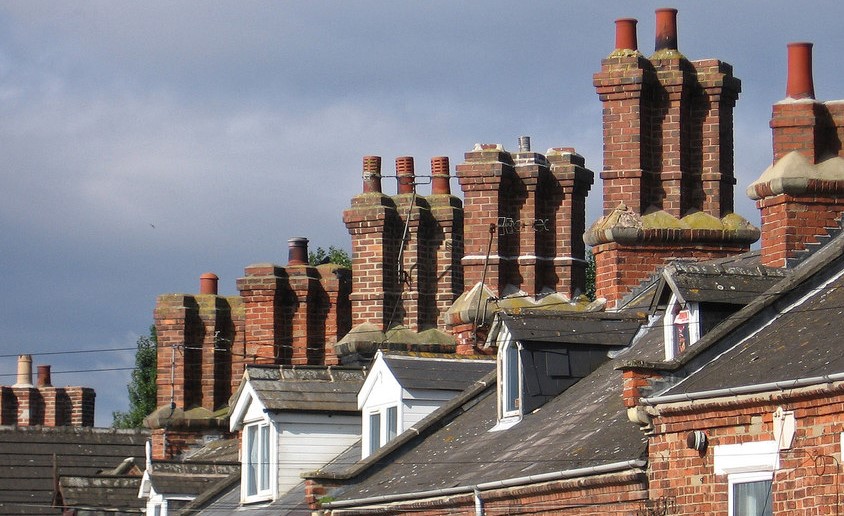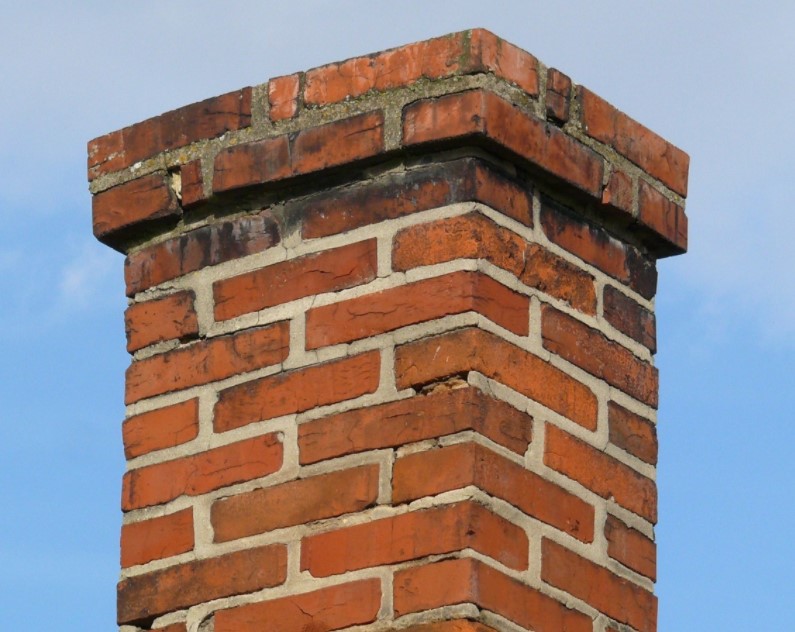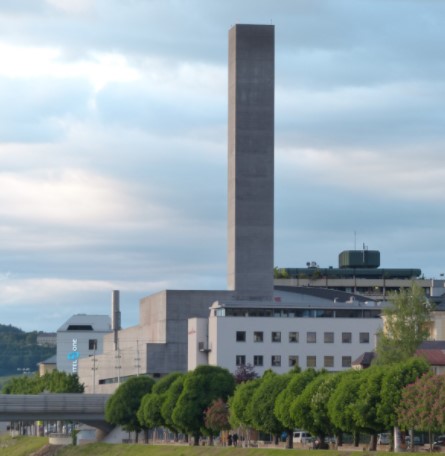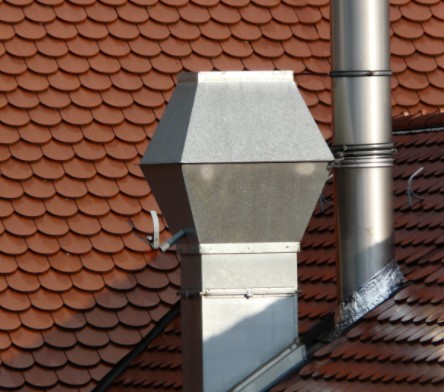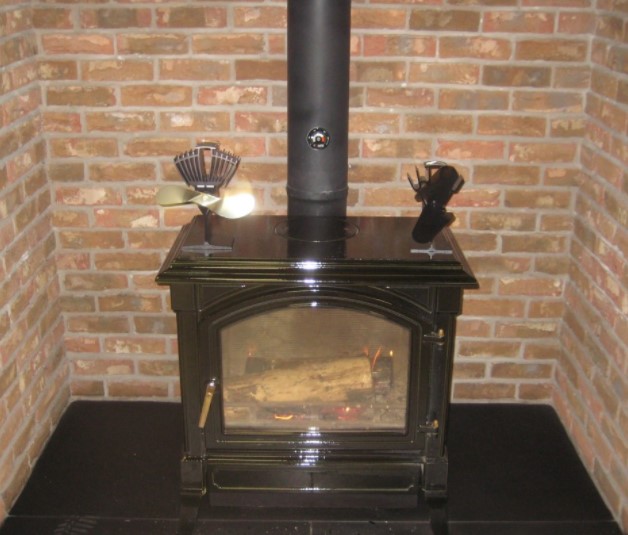Types of chimneys
Contents |
[edit] Introduction
In traditional construction, a chimney is a structure consisting of a wall or walls enclosing one or more flues. Scottish Building Standards define a chimney as: ‘…a structure enclosing one or more flues, but not a flue pipe, and including any openings for the accommodation of a combustion appliance, but does not include a chimney terminal.’ A chimney terminal is another term for a chimney pot, cowl or other structure that finishes off the chimney top.
[edit] Materials
Chimneys can be identified by the materials used in their construction. Common types include:
Brick. This common type of chimney found in residential construction can tolerate temperatures up to approximately 980C. However, since bricks are porous, they can deteriorate under certain climate conditions, and repointing can be necessary to prevent rainwater penetration.
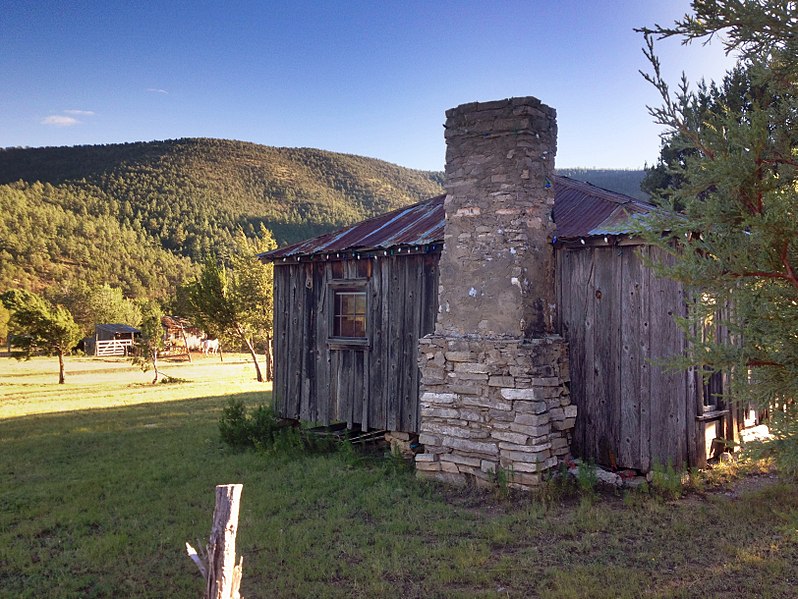 Stone. Also porous, but it can be more expensive than brick. It is generally more difficult to build with stone when the shapes are irregular. Again, repointing can be necessary.
Stone. Also porous, but it can be more expensive than brick. It is generally more difficult to build with stone when the shapes are irregular. Again, repointing can be necessary.
Concrete block. This is an easy to use and affordable material for chimney construction, and offers flexibility in terms of colour.
Metal. Metal is a good conductor of heat, although it can warp at high temperatures and must be lined for protection. Typically flues are made from metal.
Pre-fabricated materials. These factory built structures can be made to certain specifications (such as double-walled, air-cooled and so on).
Wood burning stovepipe chimneys. These vertical structures are attached to stoves and go through the ceiling and out through the roof. Due to the high temperatures of wood burning stoves, these chimneys must be able to withstand high heat. This may be referred to as a flue.
[edit] Chimney classes
[edit] Class 1
Traditional masonry chimneys found on older buildings (built before the 1960s) tend to be designated as Class 1. These chimneys are positioned on an internal or external wall and can contain more than one flue for more than one fire. However, fires cannot share the same flue. These chimneys tend to require liners, due to their age.
[edit] Class 2
Chimneys outfitted with pre-fabricated flues are categorised as Class 2. These chimneys can sometimes be identified by a metal chimney terminal. They are more commonly found in newer properties.
[edit] Related articles on Designing Buildings
Featured articles and news
One of the most impressive Victorian architects. Book review.
RTPI leader to become new CIOB Chief Executive Officer
Dr Victoria Hills MRTPI, FICE to take over after Caroline Gumble’s departure.
Social and affordable housing, a long term plan for delivery
The “Delivering a Decade of Renewal for Social and Affordable Housing” strategy sets out future path.
A change to adoptive architecture
Effects of global weather warming on architectural detailing, material choice and human interaction.
The proposed publicly owned and backed subsidiary of Homes England, to facilitate new homes.
How big is the problem and what can we do to mitigate the effects?
Overheating guidance and tools for building designers
A number of cool guides to help with the heat.
The UK's Modern Industrial Strategy: A 10 year plan
Previous consultation criticism, current key elements and general support with some persisting reservations.
Building Safety Regulator reforms
New roles, new staff and a new fast track service pave the way for a single construction regulator.
Architectural Technologist CPDs and Communications
CIAT CPD… and how you can do it!
Cooling centres and cool spaces
Managing extreme heat in cities by directing the public to places for heat stress relief and water sources.
Winter gardens: A brief history and warm variations
Extending the season with glass in different forms and terms.
Restoring Great Yarmouth's Winter Gardens
Transforming one of the least sustainable constructions imaginable.
Construction Skills Mission Board launch sector drive
Newly formed government and industry collaboration set strategy for recruiting an additional 100,000 construction workers a year.
New Architects Code comes into effect in September 2025
ARB Architects Code of Conduct and Practice available with ongoing consultation regarding guidance.
Welsh Skills Body (Medr) launches ambitious plan
The new skills body brings together funding and regulation of tertiary education and research for the devolved nation.
Paul Gandy FCIOB announced as next CIOB President
Former Tilbury Douglas CEO takes helm.






